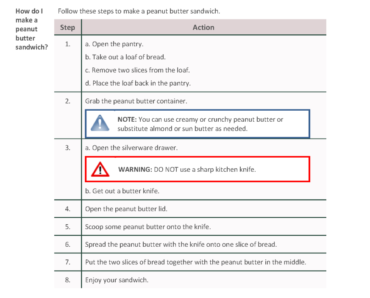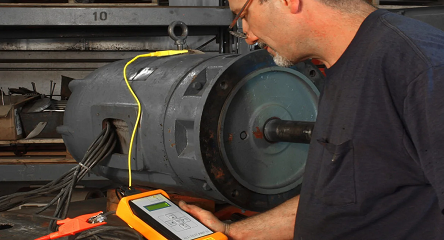Five Minute Facts
How Consistently Designed Procedures Can Save Lives, Time, and Money
What is a Procedure?
Procedures are a series of steps followed in a regular, definite order, and most people complete the steps of multiple procedures every day. Whether they’re written down or internalized, procedures are organizational tools that help people safely and accurately complete tasks. We at Shea strongly believe that consistent, usable procedures (and other types of documentation) improve performance, reduce risk, and save lives.
A significant component of whether documents are serviceable is if they’ve been written for the end-user. People refer to a procedure to answer the question of how to do a specific task; making that information difficult to find is a disservice to the document’s intended user.
Why Document Formatting Matters
So why does it matter if your procedures are well organized and consistently formatted?
Let’s say a midstream oil and gas company has six natural gas processing facilities within 50 miles of each other. Some of the systems are the same, and a few are different. A technician is working at location A and is asked to fill in at location B for a week because B is short-handed. Upon arrival, the technician needs to review some alarm response information about a specific system. He or she looks on the shelf, finds some three-ringed binders, and pulls out the system binder that has the necessary information.
The location B binder looks just like the one at location A on the outside, but when the technician opens it, it looks very different. The way the document is set up is different, some of the headings are different, the structure is different, and the format of the alarm response tables is different. The technician is a bit flustered because now it’ll take extra time to find the information. If this were an actual emergency and alarms were going off, that extra time could be the difference between successfully closing a valve and having a dangerous chemical leak.
If the documents had been formatted and organized the same way as the ones the technician used in his or her initial training at location A, the technician would have known exactly which section of the document had the information. Procedures should be written and formatted to allow ease of access to critical information, regardless of the location or equipment.
Better Procedure Structure Example
Take a look at this brief example:
Procedure 1: How to Make a Peanut Butter Sandwich
First, open the pantry and take out a loaf of bread. Remove two slices from the loaf, and then place the loaf back in the pantry. Decide you want a peanut butter sandwich so that you don’t have to open the fridge, and grab the peanut butter container. Go to the silverware drawer and get out a butter knife. Open the peanut butter lid, and then scoop some peanut butter onto the knife. Spread the peanut butter with the knife onto one slice of bread. Put the two slices of bread together with the peanut butter in the middle. Enjoy your sandwich.
Setting aside the fact that you should probably add jelly or honey to your sandwich, and you may want to procure a plate, this procedure is decently written. The steps are laid out in order and have specific actions for the user to take, which should keep the user safe and result in a sandwich.
But, it could be so much more useful and easier to :

The text is mostly the same, but it is much easier to find what you need to know quickly in the second format. There are some additional safety notes about which knife to use and a Note added about substitutions, and those stand out because of their formatting. Not all procedures need to look exactly the same, but they should all provide pertinent information in a format that is easy for the user to scan the page and find what they need to know and do.
Depending on the complexity of the procedure, you may want to add images, have certain actions in bold, or include a different font color to draw attention. Consistent white space and layout contribute to the usefulness of your documents.
We can help you design a consistent procedure template with the information you need to communicate clearly included, and then develop or reformat your procedures to make them more effective. Again, if the goal of a procedure is to help a user complete a task, you want them to be able to find the information they need efficiently, so an upfront investment of time and money into well-designed procedures will have an exponential return.
Consistent Procedures Save Lives
While the initial work of getting all of the documents within a region or a company to match takes time, intentionally organized documentation consistently helps employees be more efficient. Procedures that are essential to safety especially need to be formatted consistently and present information in a structure that makes it easy for the user to find what they need quickly in an emergency situation. Continuity like this can save money, it can save time, and it can also save lives.


